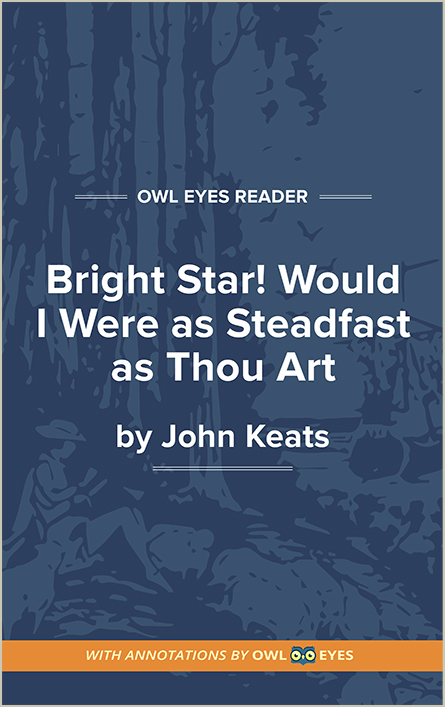- Annotated Full Text
- Literary Period: Romanticism
- Publication Date: 1838
- Flesch-Kincaid Level: 21
- Approx. Reading Time: 0 minutes
Bright Star! Would I Were Steadfast as Thou Art
John Keats wrote the final version of “Bright Star” in a copy of The Poetical Works of William Shakespeare while he was traveling to Rome in 1820. At that time, Keats was in the late stages of tuberculosis, the disease that would take his life just five months later. His doctors advised him to move to a warmer climate to prolong his life, and so he left behind his lover Fanny Brawne knowing he would never see her again. Keats touchingly captures the anguish he felt over never again holding his lover and feeling her chest rise and fall beneath him in this tragic sonnet. Keats’s speaker turns to the stars and wishes to be as steadfast and everlasting as they are so that he might prolong just one intimate moment with this woman. Seeped in Romantic language and natural imagery, Keats captures the paradox between wanting to “live ever” in a moment that is inherently changeable. The “bright star” has been interpreted as both the North Star and a declaration of the love Keats bore for the woman he had left behind. As Keats wrote to Brawne, “Love is my religion — I could die for that — I could die for you.”
- Annotated Full Text
- Literary Period: Romanticism
- Publication Date: 1838
- Flesch-Kincaid Level: 21
- Approx. Reading Time: 0 minutes

